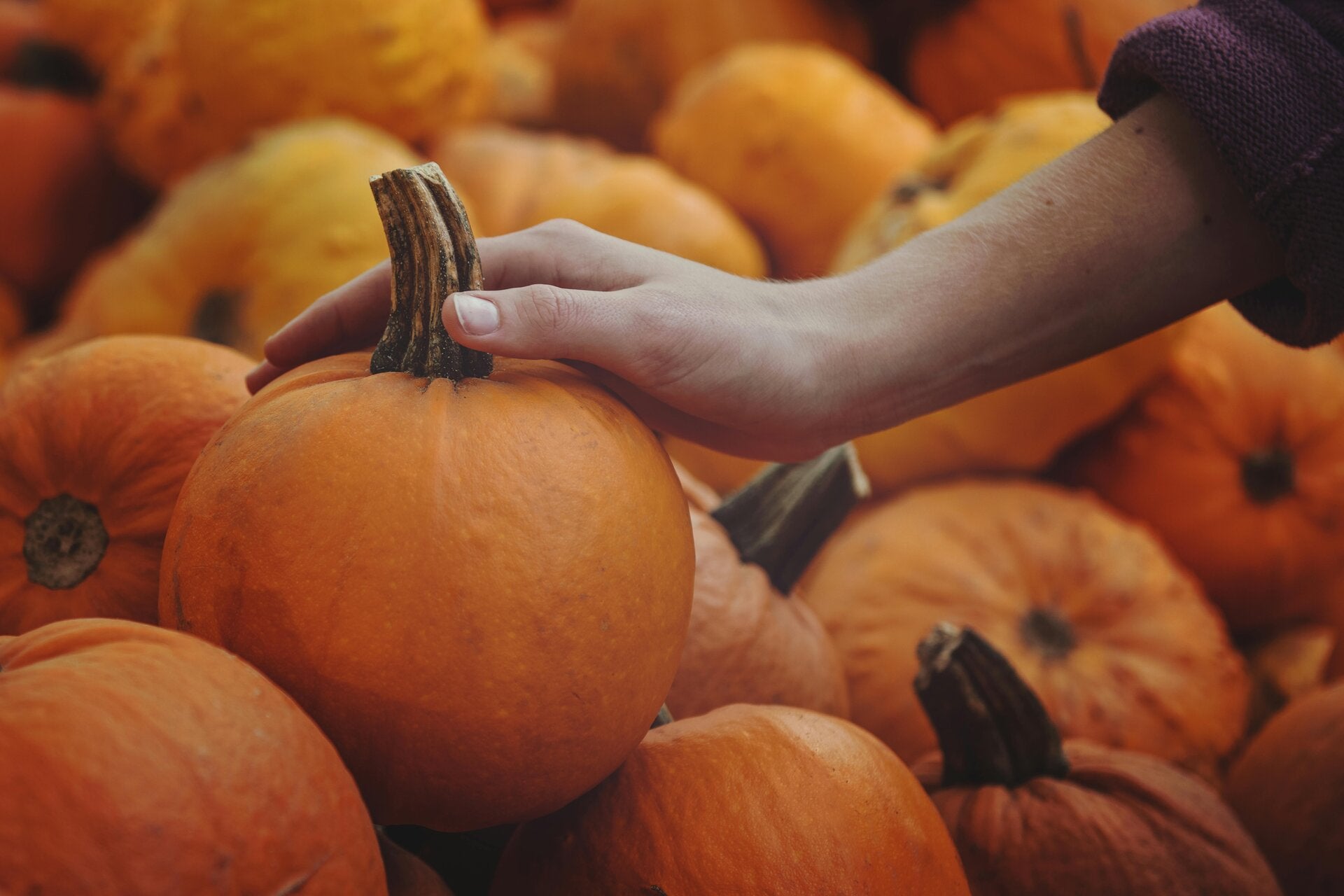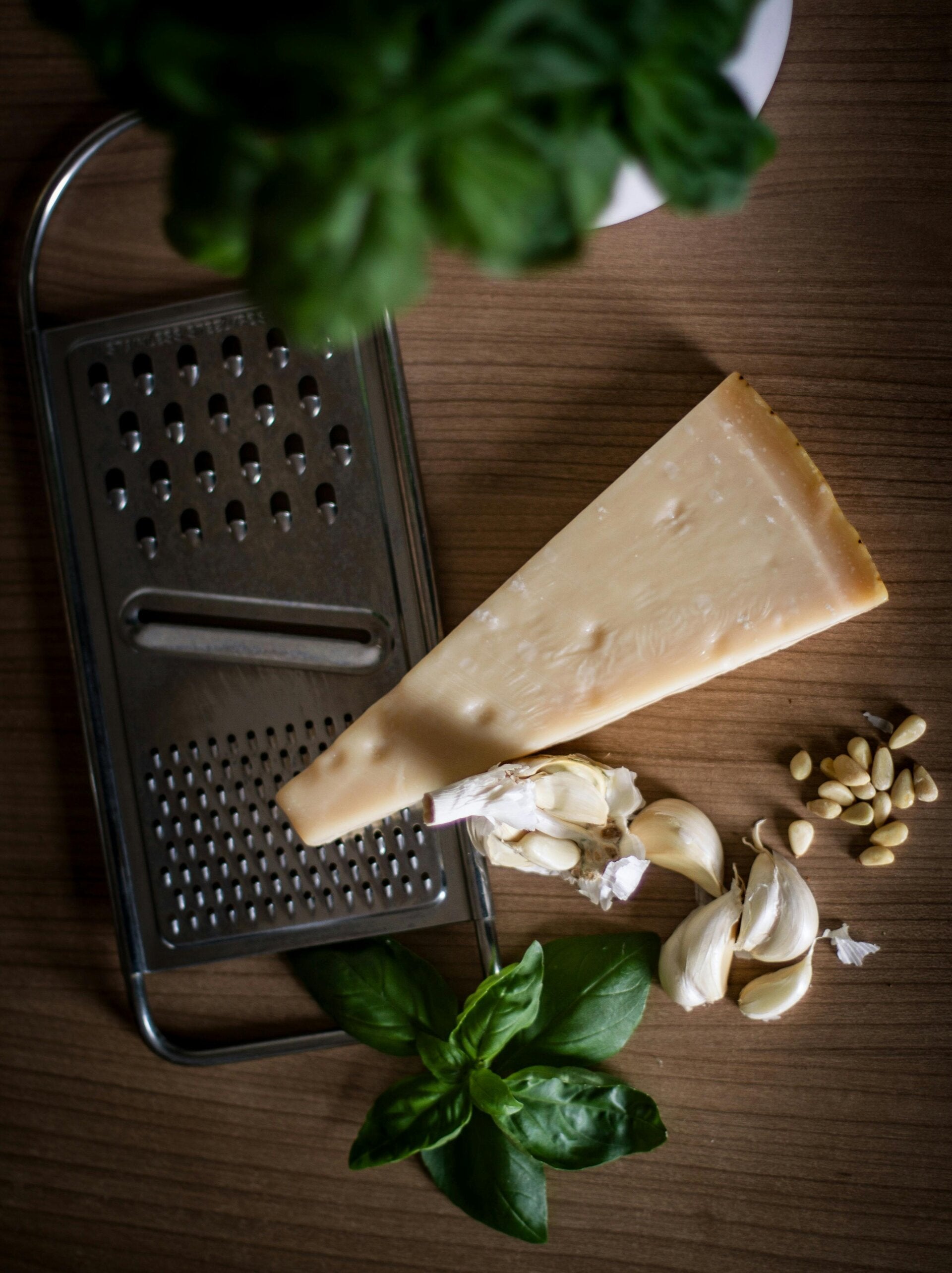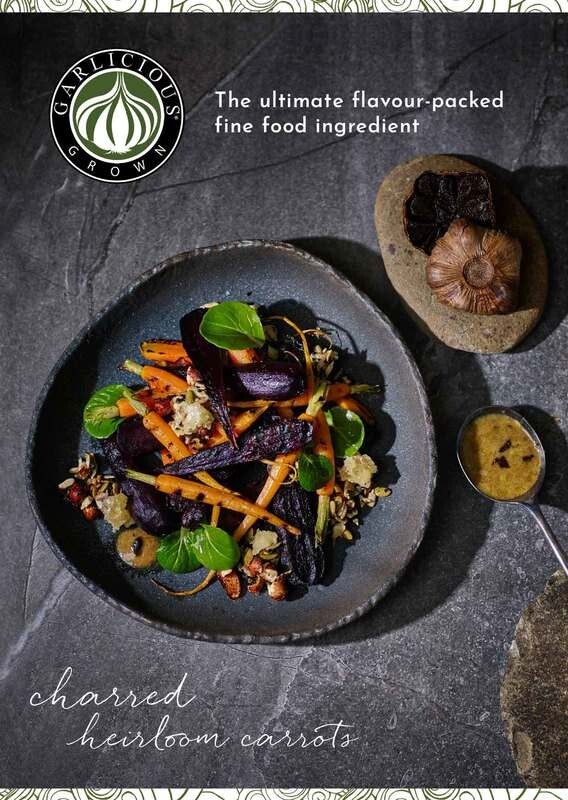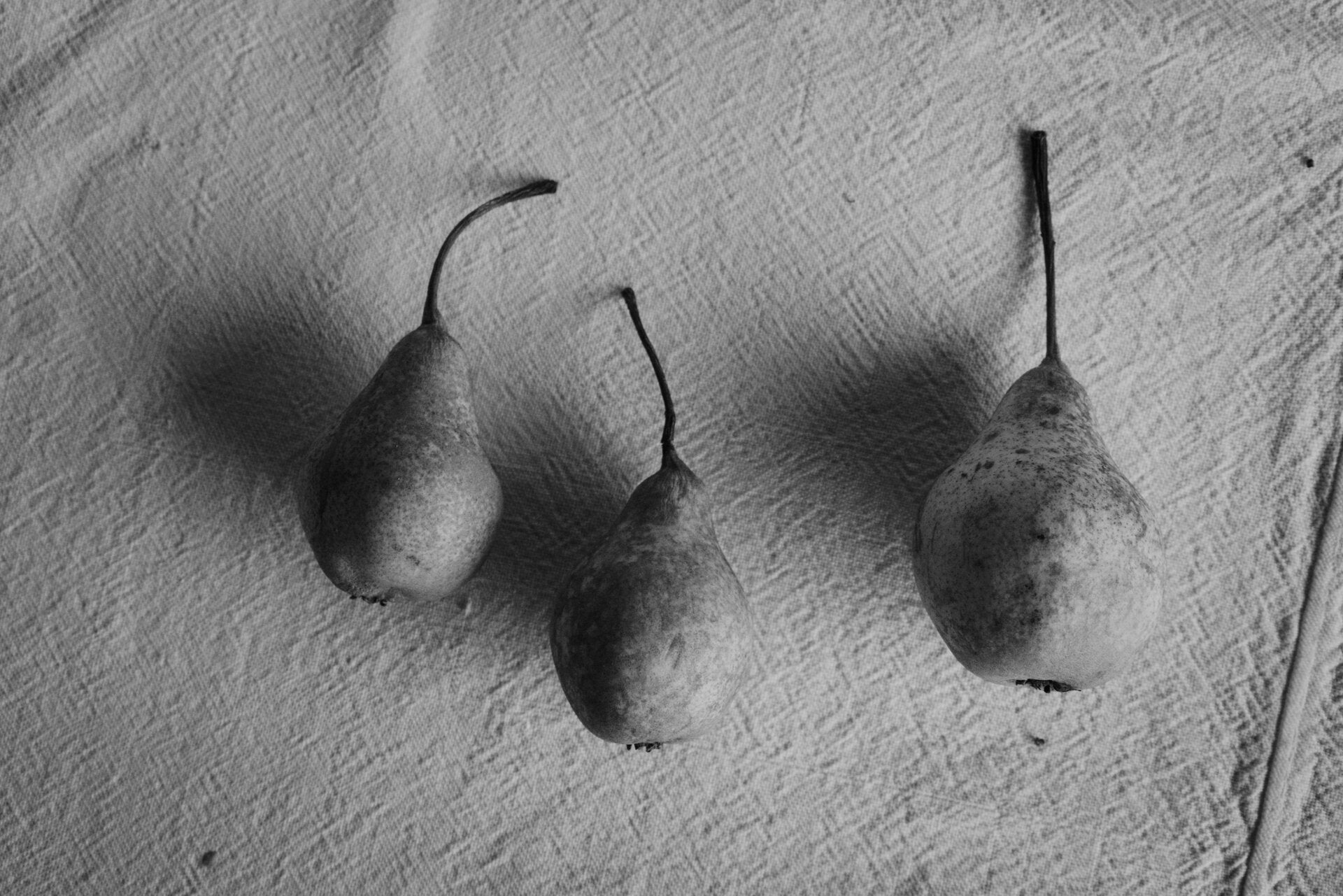


Sweet As Honey
Label Truths
Good quality honey is always going to be more expensive. Cheaper varieties are often mass produced, blended from various sources and adulterated with other syrups. Thankfully the label says it all thanks to strict production regulations.
Look for terms like 'unblended', 'local', 'single-origin' and 'country of source' before making a purchase. You'll find that cheaper honeys are usually a blend of EU honeys. The flavour won't be bad but they will generally be lower quality and may not offer the same health benefits.
More honey facts


Pumpkin Health Facts
Cooking for the Season
Not just a spooky face, pumpkins are rich in nutrients including vitamins A & C, potassium, lutein and fibre. It is one of the more intimidating vegetables being large with tough skin and lots of seeds to put aside. But if you take the trouble to tackle a pumpkin (using caution with your knife), the hard work will be worth it. This bright-coloured vegetable is said to be good for heart health, lower cholesterol, improve skin and may reduce the risk of cancer.

Parmigiano Reggiano
aka Parmesan Cheese
A favourite hard cheese for many, this fruity nutty cheese is named after two locations in Italy, Parma and Reggio Emila. It is a protected product (PDO) being produced only in permitted regions ensuring its unique quality and link to those regions. It's a key ingredient in many Italian pasta dishes and some even say it is a 'healthy cheese'.
Try grating Parmesan circles on greaseproof paper, put in a low oven for 10 mins until melted - makes a tasty & crispy garnish.


Preserved Lemons
A staple of Middle Eastern & North African diets, preserved lemons are a nice ingredient to have in your cupboard. They can be shop bought or homemade and add a unique tangy, salty & slightly bitter depth to stews, tagines, dips and sauces.


Fermented Black Garlic
Umami packed with sweet, savory, and slightly tangy flavor. As well as many health benefits, this ingredient can be used in many ways.
Click here to find out more. (VegNews.com)

The Coffee Conflict
If coffee has as many health benefits as some research suggests, I may live to be 100. But like most ingredients in our world, there are conflicting statistics out there with the general consensus that it’s okay when consumed moderately.
What is coffee? The two most common types coffee beans grown are Arabica and Robusta. Brazil is the largest producer of coffee beans followed by Vietnam, Columbia and Ethiopia, being the other top ranking exporters across the 70 global coffee producers in the Americas, Southeast Asia, India and Africa.
The coffee bean is a seed grown on the coffea plant. When the fruit is ripe, it is handpicked using one of two methods - ‘Selective picking’ where only the ripe fruit is selected or ‘Strip-picking’ where all fruit is harvested regardless of its level of ripeness. The latter being more indiscriminate, the fruit is often sorted post harvest to improve the quality.
The coffee berries are then processed either using a ‘wet’ or ‘washed process, a ‘natural’ or ‘drying’ process or a more exclusive method, the 'Kopi Luwak' excretion process which believe it or not produces the highest quality coffees. Read more here.
So is coffee good for our health? As we know, coffee can make us anxious, shaky, dehydrated and increase our heart rate if over consumed (more than 3-4 cups a day). Some coffee drinkers may also experience insomnia, headaches and heartburn depending on their physiological condition. All of these symptoms are mainly due to the presence of caffeine in the coffee bean - approximately 95mg per average cup. Research suggests that the consumption of 400mg of caffeine per day is a safe amount, but everyone’s health profile differs. When you experience any negative symptoms, it might be a good idea to reduce the amount of coffee you drink or substitute a good decaf option into your daily regime that contains reduced amounts of caffeine. And good news for women, a recent Harvard study suggests that consuming caffeinated coffee in midlife may promote healthy aging and longevity.

Summer Fruit
Delicious sweet and juicy strawberries are generally good for us being rich in vitamin C, manganese, folate, fibre and other beneficial antioxidants. There are hundreds of varieties of strawberries but there are three main categories... June-Bearing; Ever-Bearing & Day-Neutral. The June-Bearing variety speaks for itself producing fruit for the month of June and sometimes longer. The Ever-bearing variety produces two harvests in Spring and late Summer and the Day-Neutral variety has a smaller fruit that can grow up to October, weather permitting.
In Ireland, the June-Bearing Malling Centenary variety is the most widely grown by commercial growers because of its high quality and greater productivity. I have a memory of picking strawberries in a local field when I was younger and paying by weight for my bowlful with bright red corners around my mouth.
Nowadays, supermarkets and food delis sell ripe strawberries throughout the Summer months. And when driving around, it’s definitely worth pulling up to one of the roadside stalls that sell farm fresh strawberries, as well as new season potatoes.
Wexford is one of the biggest producers of strawberries including Wheelocks Fruit Farm, Greenhill Fruit Farm, Kearns Fruit Farm and Green's Berry Farm. Why Wexford? Apparently due to its ‘Sunny South-East’ location, milder temperatures and unique shale soils, it is easier for growers to cultivate crops. And along with advanced farming techniques, the strawberry season now extends from May to September.


That's Amore

Believe it or not, the original pizza type dish may have been born in Ancient Greece where baked flatbreads with various toppings including cheese, garlic and onions were enjoyed by the Greeks, Romans and Egyptians. These were known as plakountos and some say were the catalyst for pizza as we know it today.
However, research shows that Napoli (Naples), Italy is considered to be the true birthplace of pizza (perhaps having been influenced from its time as a Greek colony Neapolis in the 7th century BC). The first Neapolitan flatbread, known as ‘Pizzaiola’, was invented in the 1800s in this area of Southwest Italy, initially prepared using only tomato sauce and garlic on a bread base. The Margherita pizza, probably the most popular pizza in the world, is said to have been invented by Neapolitan baker Raffaele Esposito in 1889 in honour of the Queen Consort of Italy, Margherita of Savoy, preparing the pizza with tomato sauce, mozzarella cheese and basil to represent the colours of the Italian flag. But this legend has been questioned by food historians who believe that the Pizza Margherita concept had been around prior to that, perhaps known then as 'Pizza Marinara'.
After World War II when soldiers returned to their native countries, they craved the taste for this delicious tomato & cheese flatbread that they had experienced during their time abroad. This coupled with Italian immigrants travelling to the US and other countries in the 1900s is said to have led to the growth of popularity of pizza worldwide.
Today pizza has evolved with many variations of toppings and bases being sold in shops, cafes and restaurants. We all have our preferences when it comes to choosing a pizza, some of us preferring to keep it simple. And with good quality pizza bases now available in supermarkets, it is easy to DIY at home & bake in your oven or outside pizza stove.
Pizza Margherita recipe - BBC GoodFood
Sherry Wine Vinegar

Sherry wine vinegar is often used in cooking, especially to enhance tomato based dishes. I first used it when there was an open bottle left behind in an AirBnB apartment I rented in Spain. Adding it to the tomato pasta sauce I was cooking, it transformed the flavour ever so slightly giving the tomatoes and garlic a rounded lift. This gourmet wine vinegar made from sherry is produced in the Spanish province of Cádiz and inside the triangular area between the city of Jerez de la Frontera and towns of Sanlúcar de Barrameda and El Puerto de Santa María, known as the "sherry triangle" (Wikipedia).
The main issue with this vinegar is that it’s difficult to source. A few years ago I bought a bottle from the Ballymaloe House shop that lasted for months but unfortunately it is not widely available in supermarkets. Research shows that this is a result of the specific production regulations and aging process within the sherry triangle, being a protected product with a strict Denomination of Origin (D.O.).
So if you see a bottle, I suggest that you buy two or more to have in your cupboard. Of course it is available to purchase online but check that it is produced in Spain for authenticity as other countries like France produce a version of it being a popular ingredient used in French cooking.
Is it better than other vinegars like apple cider, red & white wine and balsamic? I wouldn’t say better but milder, rounder and maybe more complex. Similar to the flavour enhancing effects of lemon juice, it is the perfect ingredient to add to salad dressings, soups, sauteed mushrooms and salsas.
Recipe from Hairy Bikers Garlic Mushrooms
Every Olive Has Its Own Story

You might be surprised to find out that there is no difference black and green olives other than their level of ripeness. All olives begin as green and slowly transform to light brown and reddish-purple before fully ripening and becoming dark black. There are about 140 varieties of olives grown in 23 countries including Mediterranean and Californian locations .
Kalamata olives are probably the most well known in Ireland along with Nocellara & Manzanilla. Olives are widely available in supermarkets, delis, health stores and farmers markets where you can often find amazing fresh olive stalls. They can be bought fresh, canned or tinned but another surprising fact is that there is no great difference between the quality of olives in any of these forms. As they can be quite bitter, they are often marinated or stuffed to take the edge off.
When it comes to olive oil, you can pay anything from €4 to €30 or more depending on the source. There are some really good quality brands out there but it is really down to its intended use. When frying or sauteing with the oil, there is no point in spending a fortune but when adding to salads or making a dressing, it is nice to have a good bottle of extra virgin to hand.
Read more about the health benefits of olives here. (Healthline)
The Cashew Nut

A nut or a fruit? Neither, a cashew nut is actually a 'drupe'. Drupes are typically fruits that are fleshy on the outside and contain a shell covering a seed on the inside. The cashew tree grows cashew apples that produce one seed per fruit. The apple acts as a distraction in nature to protect this healthy seed or as we call it, the cashew nut. India, Cote d'Ivoire, Vietnam and Tanzania produce most of the world's cashews.
Cashews have a subtle sweet flavour and contain vitamins & minerals that have many health benefits including antioxidant properties. High in saturated fat, it is advised to consume in moderation. Chilli Sweet & Spicy Cashew Nuts

The Versatile Cantaloupe

Cataloupe is a delicious breakfast, lunch or dessert option that has many health benefits. It is sweet & fruity and full of antioxidants including lutein, vitamin C, beta carotene and choline. Cantaloupes are available in supermarkets all year round but are at their peak from June to October. It is often difficult to tell their ripeness from the exterior skin.
Here are some tips when choosing yours from AllRecipes.
The Story of Spelt

Spelt or dinkel wheat is a species of wheat that is now widely grown across Europe. It is said to be more nutritional than wheat grain containing higher levels of zinc, fibre & protein. There is a misconception that spelt is gluten-free but approx. 80% protein in spelt contains gluten. The grain is often used in soups, salads, pilafs & risottos and the flour can make delicious breads, scones & cookies. In Germany and Austria, spelt loaves and rolls (dinkelbrot) are widely available in bakeries. Maple & Spelt Cookies (PEPHER recipes)

Black Beans

Also known as black turtle beans, this ingredient is a staple in Mexican dishes, both vegetarian and meat. They are versatile and can bulk up chillies, soups and some pasta dishes. A great store cupboard ingredient that can be used on the fly when there are slim pickings available. Delicious in tacos or wraps with spices, vegetables and meat.
Check out this quesadilla recipe from the Happy Pear website Creamy Spiced Black Bean Quesadilla
The Portobello Mushroom
Love them or hate them, portobello mushrooms are cheap & versatile and can be transformed into delicious dishes. It's a good option to have in the fridge if you want to create something quick. Saute, air-fry, stuff, serve with meat or in a pasta sauce.
Here is an Ottolenghi recipe that costs less than €5 and tastes 5-star. Portobello Steaks with Butter Bean Mash Ottolenghi Recipe
